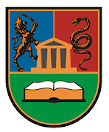Please use this identifier to cite or link to this item:
https://scidar.kg.ac.rs/handle/123456789/13222Full metadata record
| DC Field | Value | Language |
|---|---|---|
| dc.rights.license | openAccess | - |
| dc.contributor.author | Zivic, Fatima | - |
| dc.contributor.author | Mitrovic, Slobodan | - |
| dc.contributor.author | Grujovic, Nenad | - |
| dc.contributor.author | Jovanović, Živana | - |
| dc.contributor.author | Dzunic, Dragan | - |
| dc.contributor.author | Milenković, Strahinja | - |
| dc.date.accessioned | 2021-05-22T21:42:27Z | - |
| dc.date.available | 2021-05-22T21:42:27Z | - |
| dc.date.issued | 2021 | - |
| dc.identifier.citation | Zivic, F., Mitrovic, S., Grujovic, N. et al. The Influence of the 3D Printing Infill and Printing Direction on Friction and Wear of Polylactic Acid (PLA) under Rotational Sliding. J. Frict. Wear 42, 106–111 (2021). https://doi.org/10.3103/S1068366621020124 | en_US |
| dc.identifier.issn | 1068-3666 | en_US |
| dc.identifier.uri | https://scidar.kg.ac.rs/handle/123456789/13222 | - |
| dc.description.abstract | We used Fused Deposition Modeling (FDM) for 3D printing of Polylactic acid (PLA) samples, with variation of the printing infill (20% and 100%). Tribological testing was performed on a nanotribometer, under low loads (5, 10, and 15 mN), with a rotating module (ball-on-flat). We studied the friction and wear of PLA samples in two different positions: along the printing direction and normal to the printed direction. The tribological contacts along the printing direction had lower friction coefficient than the contacts that were normal to the printing direction. Samples with 20% infill produced a significantly higher friction coefficient than those with 100% infill. A higher wear factor was exhibited for a dense structure (100% infill) than for a porous material (20% infill). The load increase showed a slight transitional behavior for all types of contacts. The wear factor was on the order of 10–3 mm3/(N m) for all tests. | en_US |
| dc.description.uri | https://link.springer.com/article/10.3103%2FS1068366621020124 | en_US |
| dc.language.iso | en | en_US |
| dc.publisher | Springer | en_US |
| dc.rights | info:eu-repo/semantics/openAccess | - |
| dc.rights.uri | https://creativecommons.org/licenses/by-nc-nd/4.0/ | - |
| dc.source | Journal of Friction and Wear | en_US |
| dc.subject | PLA | en_US |
| dc.subject | 3D printing | en_US |
| dc.subject | Fused Deposition Modeling (FDM) | en_US |
| dc.subject | dynamic friction coefficient | en_US |
| dc.subject | wear | en_US |
| dc.title | The Influence of the 3D Printing Infill and Printing Direction on Friction and Wear of Polylactic Acid (PLA) under Rotational Sliding | en_US |
| dc.type | article | en_US |
| dc.description.version | Published | en_US |
| dc.identifier.doi | https://doi.org/10.3103/S1068366621020124 | en_US |
| dc.type.version | ReviewedVersion | en_US |
| Appears in Collections: | Faculty of Engineering, Kragujevac | |
Files in This Item:
| File | Description | Size | Format | |
|---|---|---|---|---|
| The Influence of the 3D Printing Infill and Printing Direction.pdf Restricted Access | Published version | 1.04 MB | Adobe PDF |  View/Open |
This item is licensed under a Creative Commons License


